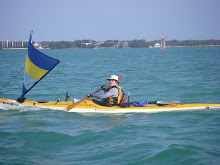
It's the 40th anniversary of New Zealand's worst maritime disaster, the sinking of the inter-island ferry the
Wahine, on April 10, 1968. I was only six at the time, but I still remember the news. And the photos taken then have been firmly engrained in most Kiwis' consciousness.
Since most Kiwis are only separated by two or three degrees of separation, we probably also knew someone who had been on the ferry that fateful day - the mother of an old friend of mine when I lived in Christchurch was one.
The weather was pretty much to blame - one of those perfect storms. And of the 734 men, women and children aboard, 53 lost their lives. Many of those who died were in the first lifeboat away, which swamped soon after launching.

What is interesting, is that only recently have Kiwis started talking about the disaster. As the
New Zealand Herald's
editorial stated, "They were undoubtedly encouraged in this by attitudes pervading New Zealand society 40 years ago. This was not a time for what might be thought unnecessary fuss. Survivors were given a cup of tea and sent home. In most cases, there was no talk of compensation. No Government medals for heroism were awarded. The message was to get on with life....
"The answer may lie in a further change emanating, in part, from the 2001 attack on the World Trade Centre. The survivors were encouraged to express their feelings. The firefighters who perished were lionised. In the midst of disaster, America looked for and found heroes.
"New Zealand is also paying ever more heed to its own heroes. The thousands who queued for hours to pay their last respects to Sir Edmund Hillary attest to that. So do the increasing attendances at Anzac Day commemorations. We have, as a society, become more sentimental."
 So here's my crystal ball gazing for the future. I believe, that in about two years time, we will not recognize GPS' as they are now. Why?
So here's my crystal ball gazing for the future. I believe, that in about two years time, we will not recognize GPS' as they are now. Why?

















